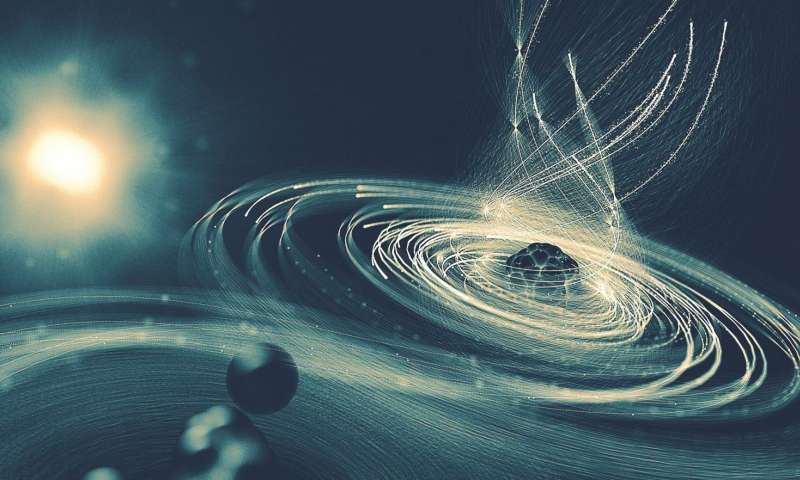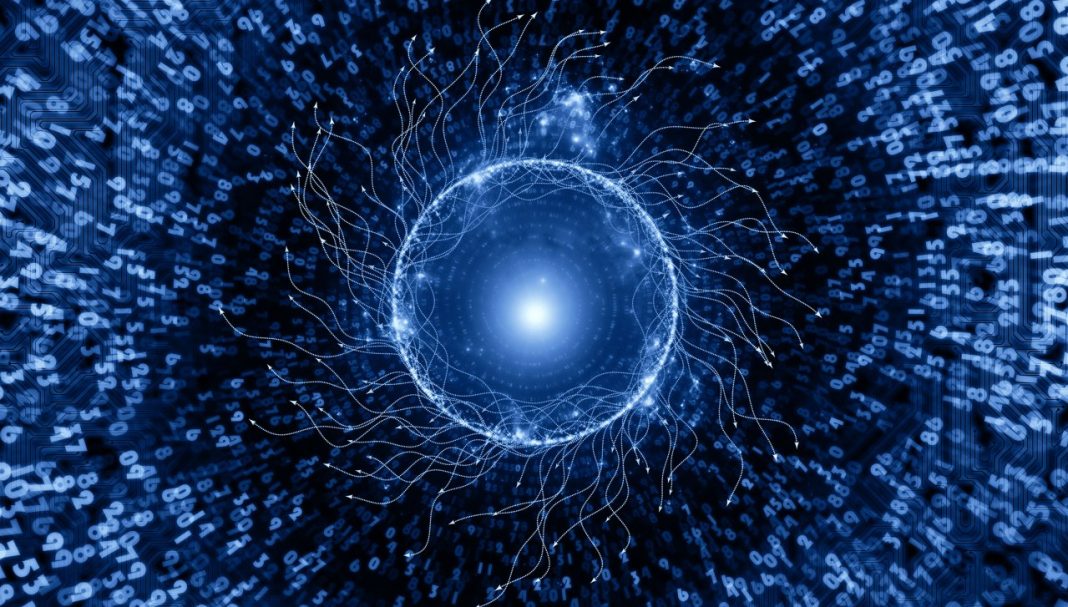It’s an exciting time in the world of physics currently, especially for scientists at the Department of Energy’s SLAC National Accelerator Laboratory. A molecular black hole has been created using the world’s most powerful X-ray laser. They focused its full intensity on a small molecule and as they did they got more than they had hoped for. The team then observed as a single laser pulse managed to strip most of the electrons from the molecule’s biggest atom. This left a massive void that began to pull in other electrons from the other atoms in the molecule, just as a black hole would.
In just a few femtoseconds (millionths of a billionth of a second) more than 50 electrons had disappeared from the molecule before blowing up, which was a great deal more than the scientists were expecting. The results from the experiment give scientists a better understanding of how to make the use out of these ultrahigh intensities from SLAC’s Linac Coherent Light Source (LCLS). The scientist is also using the laser to study the behavior of matter under extreme conditions.
“For any type of experiment you do that focuses intense X-rays on a sample, you want to understand how it reacts to the X-rays,” confirmed Daniel Rolles of Kansas State University. “This paper shows that we can understand and model the radiation damage in small molecules, so now we can predict what damage we will get in other systems.” Tolles and Artem Rudenko of Kansas State led the experiment that used LCLS’s Coherent X-ray Imaging equipment. They used this as it delivers the highest possible energies possible at LCLS and can also record data at the very moment before the samples are destroyed by the intense laser.
Sebastien Boutet is the co-author of the paper and an LCLS staff scientist and he commented, “They are about a hundred times more intense than what you would get if you focused all the sunlight that hits the Earth’s surface onto a thumbnail.” In this study, the team used focused the X-ray onto a small spot using special mirrors. During this time they observed three different types of samples: individual xenon atoms (with 54 electrons each), and two types of molecules that each have one single iodine atom (and 53 electrons).
As part of the experiment, the team managed to tune the energy of the CXI pulses in order to create “hollow atoms”, which were those stripped of their innermost electrons from xenon or iodine atoms. Electrons from the outer parts of the atom then dropped down to fill these empty spaces, before being booted out by subsequent X-rays. What would remain is just a few of the more tightly bound electrons. This happened in both the freestanding xenon and iodine atoms. But, that’s not where it stops. After the iodine lost most of its electrons, it was left with a strong positive charge that continued to suck in electrons from nearby hydrogen and carbon atoms. Those electrons were then also dismissed.
An isolated iodine atom would have lost 47 electrons in this process, but the iodine in the smaller molecule lost 54, and that’s a level of damage much higher than expected and different to that of what occurs normally in nature. “We think the effect was even more important in the larger molecule than in the smaller one, but we don’t know how to quantify it yet,” says Rudenko. “We estimate that more than 60 electrons were kicked out, but we don’t actually know whether it stopped because we could not detect all the fragments that flew off as the molecule fell apart to see how many electrons were missing. This is one of the open questions we need to study.”
Mike Dunne is LCLS director and he recognizes the importance of these experiments and is in full support of them. He commented, “This has important benefits for scientists wishing to achieve the highest resolution images of biological molecules (for example, to inform the development of better pharmaceuticals). These experiments also guide the development of a next-generation instrument for the LCLS-II upgrade project, which will provide a major leap in capability due to the increase in repetition rate from 120 pulses per second to 1 million.”
More News to Read











